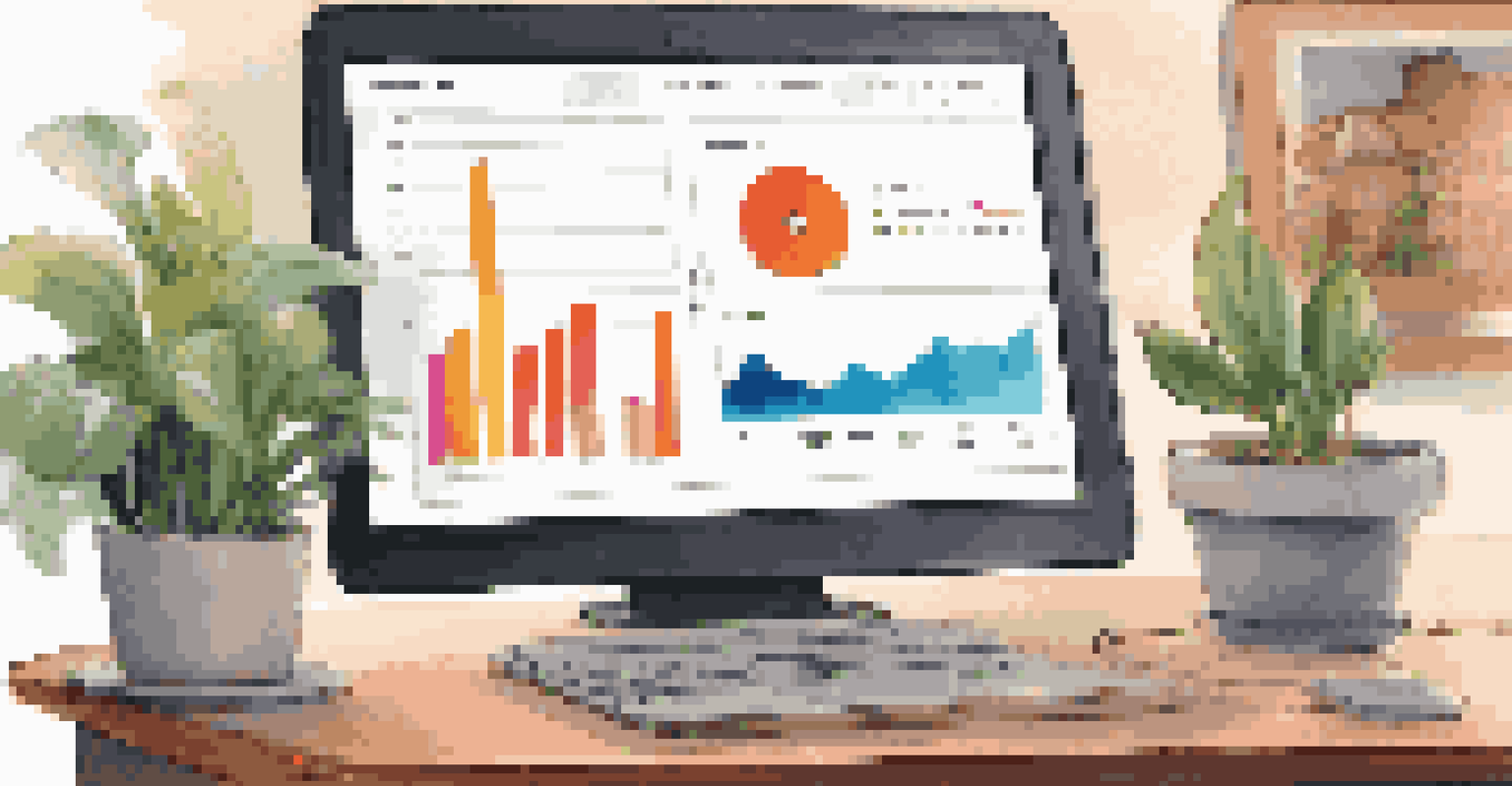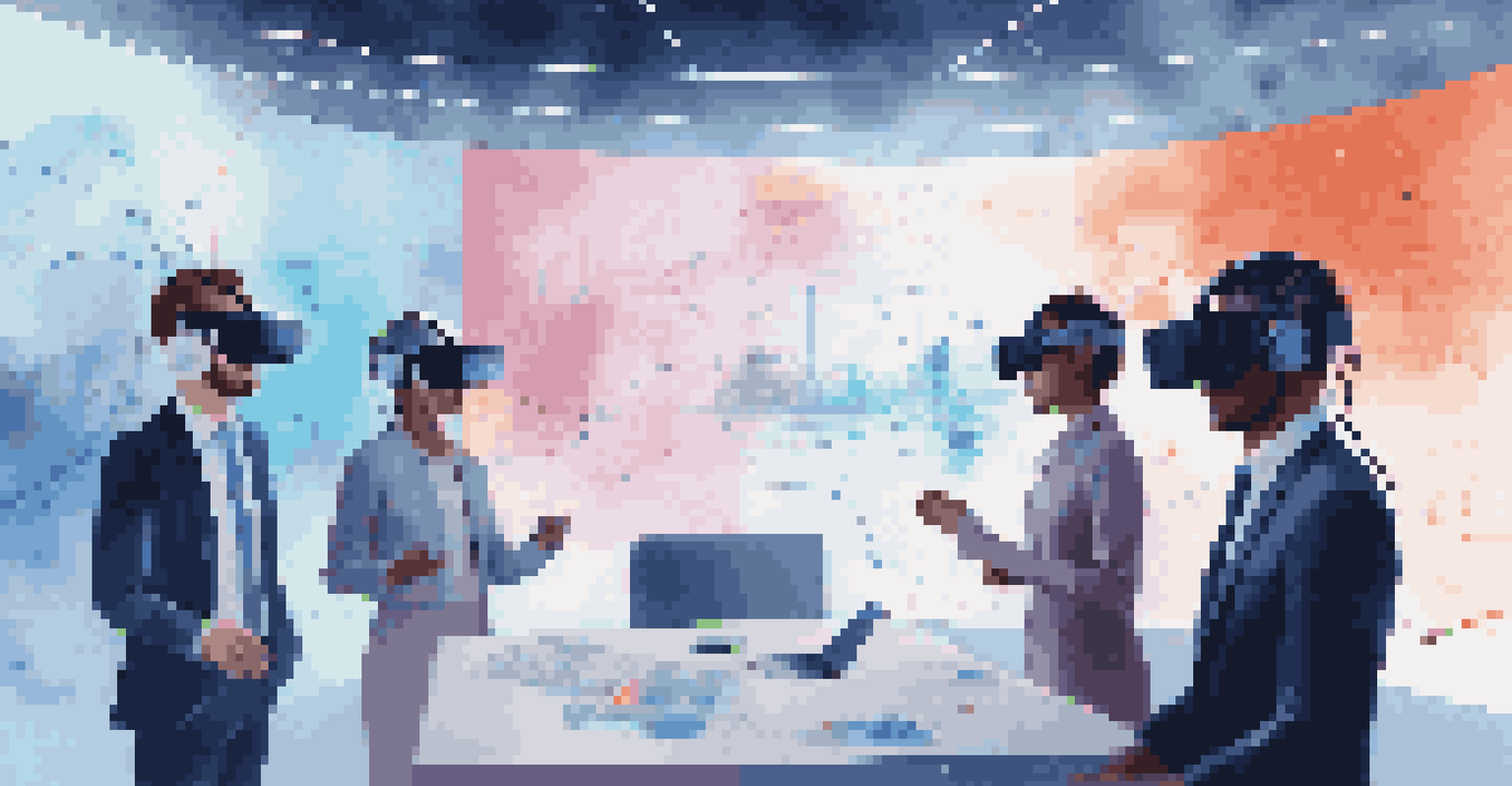Using Data Visualization to Improve Team Collaboration

Understanding Data Visualization: What It Is and Why It Matters
Data visualization is the graphical representation of information and data. By using visual elements like charts, graphs, and maps, it makes complex data more accessible and understandable. This clarity is essential for teams that need to make informed decisions quickly.
Data visualization is not just a tool; it's a way of thinking about data and its potential to enhance understanding and drive decisions.
Imagine trying to understand a mountain of numbers on a spreadsheet—it can be overwhelming! In contrast, a well-designed chart can highlight trends and insights at a glance. This transformation from raw data to visual clarity not only aids comprehension but also encourages a more collaborative environment.
In a team setting, effective data visualization fosters better communication. When everyone can see the same visual data, it aligns perspectives and encourages discussions based on shared insights, making it easier to collaborate on solutions.
The Role of Data Visualization in Collaborative Decision-Making
When teams face critical decisions, data visualization serves as a powerful tool in the decision-making process. By presenting data visually, teams can quickly identify patterns and anomalies that might not be evident in text-based reports. This ability to swiftly analyze information leads to more informed and timely decisions.

For example, consider a marketing team evaluating campaign performance. A series of colorful graphs can reveal which strategies are yielding results and which aren’t, enabling the team to pivot quickly. This visual insight not only saves time but also enhances collective understanding and engagement.
Data Visualization Enhances Clarity
By transforming complex data into visual formats, teams can quickly understand trends and insights, leading to better decision-making.
Moreover, when team members can visualize data together, they can brainstorm solutions collaboratively. This open dialogue, fueled by visual aids, encourages idea sharing and innovation, ultimately leading to more effective strategies.
Creating a Culture of Transparency Through Visual Data
Transparency is vital for effective teamwork, and data visualization plays a key role in fostering this culture. By openly sharing visual data, teams can create an environment where everyone has access to the same information. This openness builds trust and encourages accountability among team members.
The goal is to turn data into information, and information into insight.
For instance, a project management dashboard visualizing task progress can keep everyone informed about project status. When team members can see how their contributions fit into the bigger picture, it creates a sense of ownership and pride in their work.
Additionally, transparent communication through visual data helps eliminate silos within teams. When everyone is on the same page, collaboration becomes seamless, leading to a stronger, more united team.
Enhancing Remote Collaboration with Data Visualization Tools
In today’s remote work environment, data visualization tools have become essential for maintaining effective collaboration. With team members spread across different locations, having visual data at everyone’s fingertips can bridge the gap and keep communication flowing. Tools like Tableau, Power BI, or even Google Data Studio can facilitate this.
Imagine a virtual meeting where a team reviews a dashboard of key performance indicators. Instead of discussing numbers verbally, they can visually analyze trends together, making the experience more engaging and productive. This shared visual context enhances understanding and encourages active participation.
Collaboration Through Shared Visuals
Visual data fosters teamwork by aligning perspectives and encouraging discussions based on shared insights.
Furthermore, these tools often allow for real-time updates, ensuring that all team members are looking at the most current data. This immediacy is crucial for timely decision-making, especially in fast-paced environments.
Best Practices for Effective Data Visualization in Teams
To maximize the benefits of data visualization, teams should follow best practices that enhance clarity and engagement. First, it’s essential to choose the right type of visual for the data being presented. For example, bar charts are great for comparing values, while line graphs are better for showing trends over time.
Another important practice is to keep visuals simple and focused. Overly complex graphics can confuse rather than clarify, so it’s best to highlight the most relevant data. Adding labels and annotations can also help guide team members through the visuals, making it easier to extract insights.
Lastly, encouraging team input during the data visualization process can lead to richer discussions. By involving team members in choosing how data is displayed, you foster a sense of ownership and empowerment, further enhancing collaboration.
Measuring the Impact of Data Visualization on Team Performance
To truly understand the value of data visualization in collaboration, it’s crucial to measure its impact on team performance. This can be done by tracking key metrics before and after implementing visual tools. For example, teams can assess changes in decision-making speed or the quality of outcomes.
Surveys and feedback sessions can also provide valuable insights. By asking team members how data visualization has affected their ability to collaborate and communicate, organizations can identify strengths and areas for improvement.
Future of Data Visualization Tools
Emerging technologies like AR and AI will redefine data visualization, making collaboration more engaging and intuitive.
Ultimately, measuring this impact helps justify investments in data visualization tools and processes, ensuring that teams can continue to thrive in their collaborative efforts.
Future Trends: The Evolution of Data Visualization in Collaboration
As technology continues to evolve, so too will the ways teams leverage data visualization for collaboration. Emerging trends like augmented reality (AR) and virtual reality (VR) are set to transform how we interact with data. Imagine being able to walk through a 3D representation of project data—how engaging and insightful that would be!
Additionally, advancements in artificial intelligence (AI) are enhancing data visualization tools, making them smarter and more intuitive. These tools will soon be able to identify patterns and suggest visualizations automatically, streamlining the process for teams.

As we look to the future, the integration of more interactive and immersive visual experiences will likely redefine team collaboration, making it even more effective and engaging.